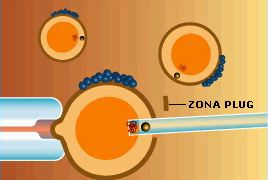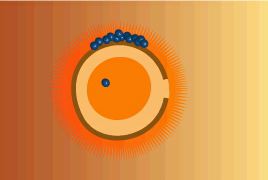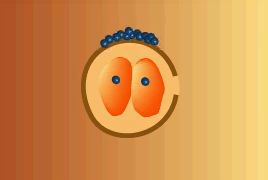Human
"Therapeutic Cloning": How It's Done [text from Scientific
American, Jan 2002]


"Eggs are coaxed to mature in a culture
dish. Each has a remnant egg cell called the polar body and
cumulus
cells from the ovary clinging to it. While an egg is held still with a
pipette, a needle is used to drill through the zona pellucida, removing
a plug. "


"After ejecting the zona plug, the needle
is inserted back in the egg through the hole to withdraw and
discard the polar body and the egg's genetic material. A cumulus cell from
another egg is taken up into the needle. Cells called fibroblasts
(or their nuclei) can also be used in this step."


"The cumulus cell is injected deep into the
egg that has been stripped of its genetic material. The injected egg is
exposed to a mixture of chemicals and growth factors designed to activate
it to divide."

"After roughly 24 hours, the activated egg
begins dividing. The cells contain genetic material only from the
injected cumulus cell."
Commentary: Injection of
nuclei from fibroblast cells was unsuccessful. Cumulus cells were used
because their small size permit injection of the entire cell into the ovum.
Among eight ova injected with cumulus cells, two completed two cell divisions
and one began a third division before halting. The developers of the procedure
have dubbed it "therapeutic cloning" to differentiate it
from "reproductive cloning", in which a nucleus from an adult
is transplanted into an ovum with the intention of producing a child that
is genetically identical to the donor. The purpose of "therapeutic
cloning" is to produce
stem cells that can be used for
treatment of disease.
Text & Figures © 2001 by Scientific American;
commentary © 2004
by Steven M. Carr